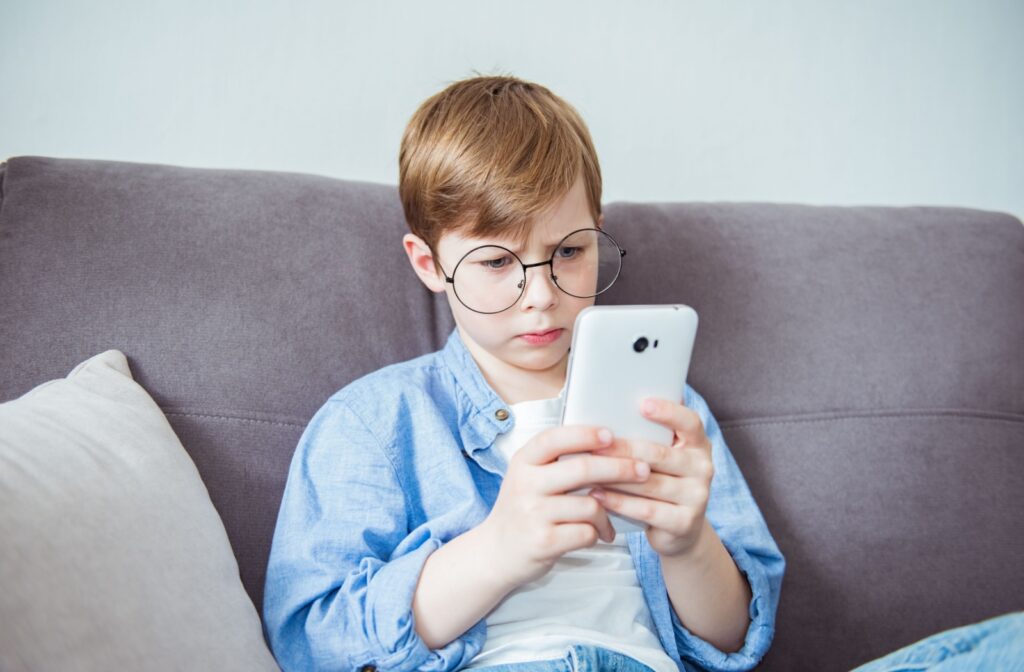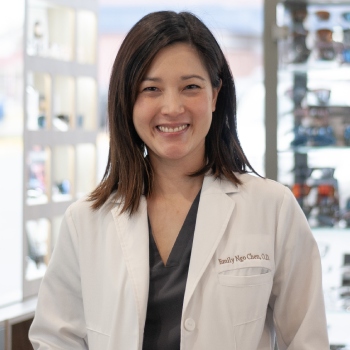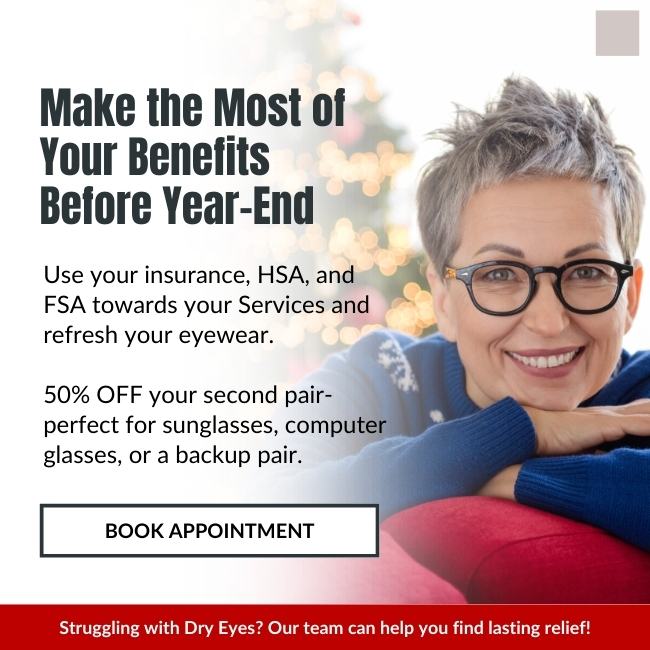Blurry vision can be frustrating, whether it’s making road signs difficult to read while driving or causing eye strain for children spending time on screens. While both are refractive errors, they affect how the eye processes light in different ways. Nearsightedness (myopia) makes distant objects appear blurry, while farsightedness (hyperopia) makes it harder to focus on nearby details.
Understanding these conditions is the first step toward finding the right solution for clearer, more comfortable vision.
Spotting the Signs of Vision Problems
Recognizing vision changes early can make a big difference in daily comfort. Myopia makes it harder to see objects in the distance. This often becomes noticeable in school-age children who struggle to read the board or adults who have trouble with street signs. Squinting to bring objects into focus, experiencing frequent headaches, or feeling eye strain after looking into the distance for too long are all common signs.
Hyperopia works the opposite way, making close-up tasks like reading or using a phone more challenging. Many people don’t realize they have farsightedness until they start experiencing discomfort. If reading for extended periods causes headaches or fatigue, or if words seem to blur together on the page, it may be a sign that close-up vision needs support.
Why Nearsightedness Develops
Myopia occurs when the shape of the eye causes light to focus in front of the retina instead of directly on it. This often happens when the eyeball is longer than average or the cornea is more curved than it should be. Because of this, distant objects appear blurry while close-up vision remains clear.
This condition is often genetic. If one or both parents have myopia, their children are more likely to develop it. Beyond genetics, environmental factors can contribute to its progression. Spending long hours on screens, reading in poor lighting, or not getting enough outdoor time have all been linked to an increased risk of worsening nearsightedness, particularly in children.
Understanding How Farsightedness Affects Vision
Hyperopia, or farsightedness, makes nearby objects appear blurry while distant objects remain easier to see. Light focuses behind the retina instead of directly on it, often because the eyeball is shorter than normal or the cornea is flatter than it should be.
Many children are born with mild farsightedness, and some naturally outgrow it as their eyes develop. However, if hyperopia is more pronounced, it can cause difficulty with reading, using a computer, or focusing on small details. Without correction, this can lead to unnecessary strain and fatigue during everyday activities.
Nearsightedness vs Farsightedness
Both conditions affect the way light enters the eye, but in opposite ways. In myopia, light focuses in front of the retina, causing distant objects to appear blurry. In hyperopia, light focuses behind the retina, making close-up tasks difficult.
The underlying causes also differ. Myopia is often linked to an elongated eyeball or a steeply curved cornea, while hyperopia is typically caused by a shorter eyeball or a flatter cornea. Myopia tends to develop in childhood and may worsen over time, whereas hyperopia is often present from birth and may become more noticeable as the eyes strain to compensate.
How Eye Exams Help Detect Vision Changes
Regular eye exams play an essential role in identifying myopia, hyperopia, and other vision changes. A comprehensive eye exam includes a visual acuity test to measure how well different distances are seen, refraction testing to determine the correct prescription, and an evaluation of overall eye health.
Some people may not realize they have a vision problem because their eyes adjust over time. This is especially true for those with mild farsightedness, who may only notice strain or headaches after prolonged reading or screen time. Detecting changes early helps prevent unnecessary discomfort and allows for the right corrective options to be explored.
Everyday Habits for Better Vision Comfort
Small changes in daily habits can help reduce strain and support long-term eye health.
The 20-20-20 rule can be a simple but effective way to reduce digital eye strain. Taking breaks from screens by looking at something 20 feet away for 20 seconds every 20 minutes can help relax the eyes. Spending time outdoors has been linked to a slower progression of myopia, particularly in children.
Nutrition plays a role in eye health as well. A diet rich in leafy greens, fish, and nuts provides essential nutrients that support vision over time. Staying hydrated can also help prevent dry eyes, which often contribute to discomfort during long periods of focus.
Personalized Treatment for Clearer Vision
Both myopia and hyperopia can be corrected with prescription eyeglasses or contact lenses. Glasses provide an easy, effective solution for clear vision at all distances. Contact lenses offer an alternative for those who prefer not to wear glasses or need flexibility for specific activities.
For those looking for a long-term option, refractive surgery such as LASIK or PRK reshapes the cornea to correct vision. While not everyone is a candidate, a consultation with an optometrist can help determine if it’s a suitable choice.
Managing Myopia in Children
When myopia develops in childhood, it often progresses over time. Specialized treatments can help slow this progression and reduce the risk of complications later in life. Myopia control options include orthokeratology (Ortho-K) lenses, which gently reshape the cornea overnight, multifocal contact lenses designed to slow changes in vision, and low-dose atropine eye drops that help manage progression.
By addressing myopia early, children have a better chance of maintaining stable vision as they grow. Encouraging outdoor play and balancing screen time with other activities can also contribute to healthier visual development.
Choosing the Right Vision Solution
Finding the solution for clear, comfortable vision depends on individual needs and lifestyle. For those with mild vision changes, eyeglasses may be all that’s needed. If frequent headaches or strain occur, an updated prescription can make a significant difference in daily comfort.
For those considering refractive surgery, a thorough evaluation helps determine whether it’s a good fit. No matter the choice, staying proactive with eye health can help your vision remain as clear as possible.
Clear Vision Starts with Regular Eye Care
Clear, comfortable vision makes all the difference in your daily life, and See & Co. is here to help you achieve it. Whether you’re struggling to see faraway details or finding close-up tasks more difficult, an eye exam is the first step toward a solution tailored to you. Book an appointment today, and let’s find the right fit for your vision needs—so you can move through life with clarity and confidence.




